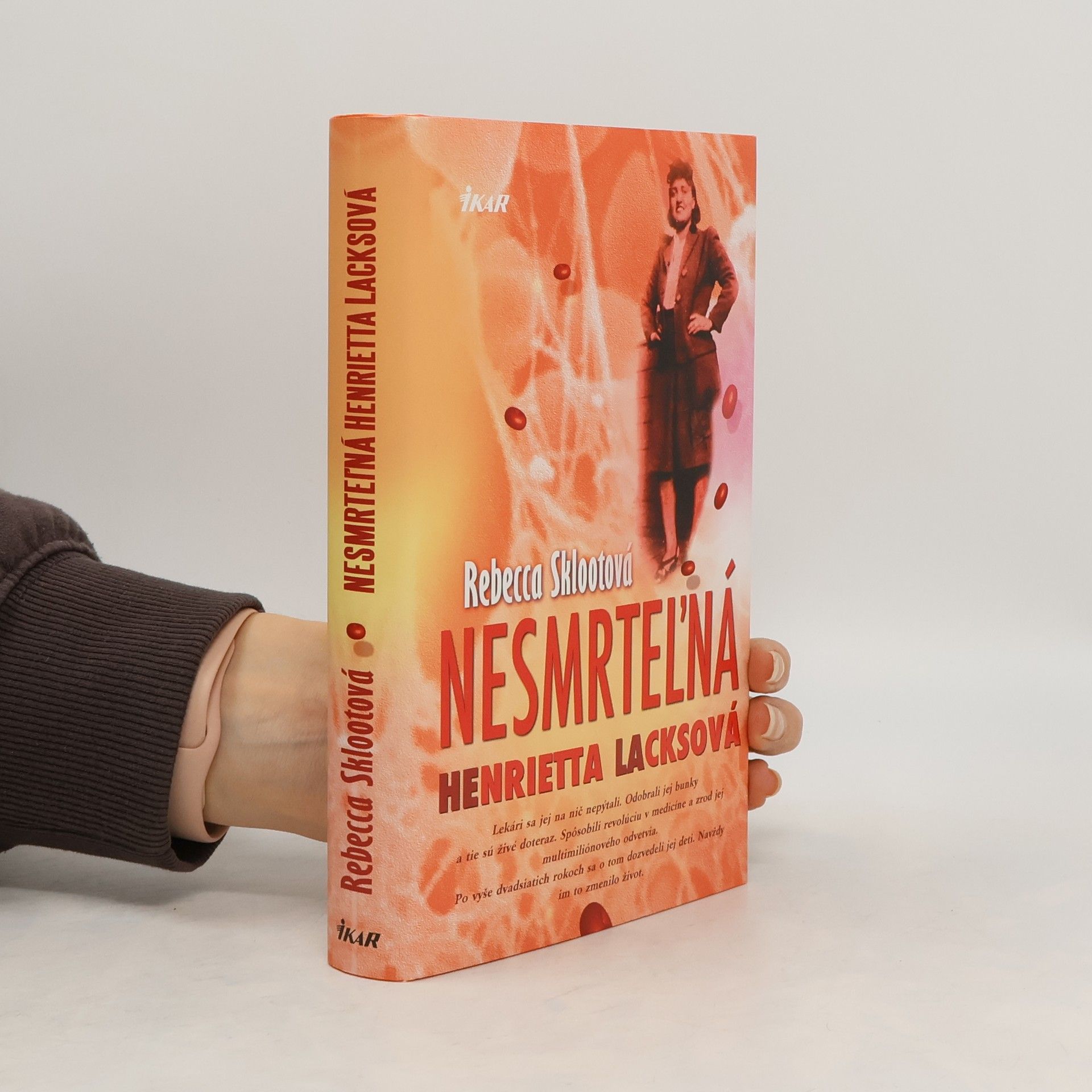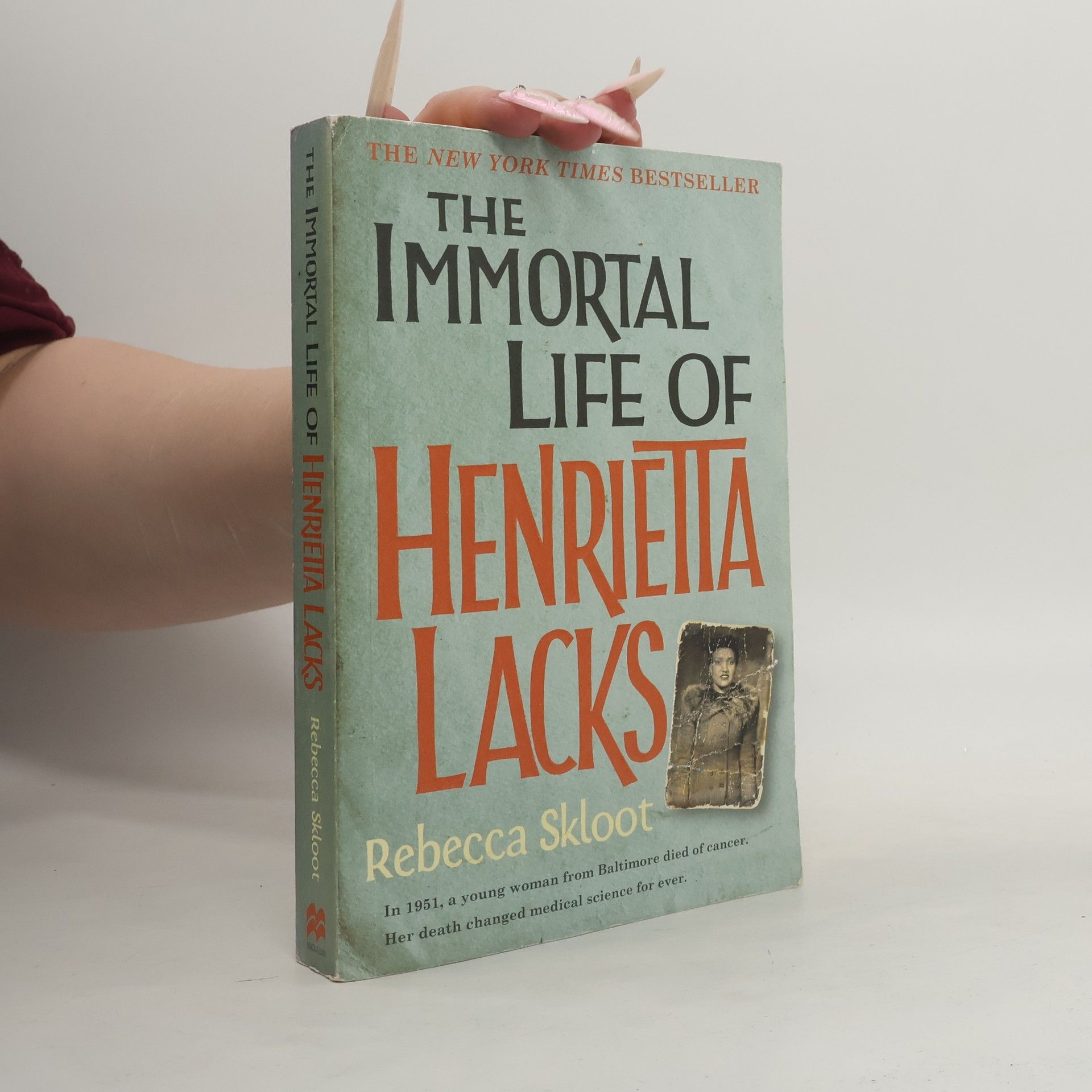A middle-grade adaptation of Rebecca Skloot's critically acclaimed, New York Times nonfiction bestseller Henrietta Lacks was a poor Southern tobacco farmer who worked the same land as her slave ancestors, and whose cells--taken without her knowledge when she was treated for cancer in 1951--have become one of the most important tools in medicine. The Lacks family did not learn of Henrietta's cells until 20 years after her death, but these first "immortal" human cells grown in culture are still alive today: they've been bought and sold by the billions and have been vital in fighting polio, cancer, and many viruses. This incredible book explores race, bioethics, scientific research, human rights, the power of family, and the question of whether we control the very cells we're made of.
Rebecca Skloot Boeken
Rebecca Skloot is een bekroond wetenschapsjournaliste die gespecialiseerd is in verhalende non-fictie. Haar werk duikt in uiteenlopende onderwerpen en onderzoekt de ingewikkelde verbanden tussen wetenschap, ethiek en menselijke levens. Skloot combineert meesterlijk nauwgezet onderzoek met meeslepende verhalen, waardoor complexe onderwerpen tot leven komen met zowel intellectuele diepgang als diepgaande empathie. Haar kenmerkende aanpak belicht belangrijke wetenschappelijke en maatschappelijke vraagstukken en biedt lezers een diepgaande en tot nadenken stemmende ervaring.



The Immortal Life of Henrietta Lacks
- 313bladzijden
- 11 uur lezen
In 1951, a young woman from Baltimore died of cancer. Her death changed medical science for ever. Her name was Henrietta Lacks, but scientists know her as HeLa. She was a poor Southern tobacco farmer whose cancer cells - taken without her knowledge - became one of the most important tools in medicine. The first 'immortal' human tissue grown in culture, HeLa cells were vital for developing the polio vaccine; uncovered secrets of cancer, viruses, and the effects of the atom bomb; helped lead to important advances like in vitro fertilization, cloning, and gene mapping; and have been bought and sold by the billions. Yet Henrietta herself remains virtually unknown, buried in an unmarked grave. Now Rebecca Skloot takes us on an extraordinary journey in search of Henrietta's story, from the 'coloured' ward of Johns Hopkins Hospital in the 1950s to East Baltimore today, where her children and grandchildren live, and struggle with the legacy of her cells. Full of warmth and questing intelligence, astonishing in scope and impossible to put down, The Immortal Life of Henrietta Lacks captures the beauty and drama of scientific discovery, as well as its human consequences.
Nesmrteľná Henrietta Lacksová
- 408bladzijden
- 15 uur lezen
Volala sa Henrietta Lacksová, no vedci ju poznajú ako HeLa. Bola to chudobná černošská pestovateľka tabaku. V roku 1951 jej bez jej vedomia odobrali bunky, ktoré sa stali jedným z najdôležitejších nástrojov v medicíne. Mali nezastupiteľnú úlohu vo vývoji vakcíny proti poliomyelitíde, v klonovaní, mapovaní génov a ďalších vedeckých výskumoch. Henriettine bunky sa predávajú a kupujú po miliardách, ona však zostáva takmer neznáma a jej rodina nemá na zdravotné poistenie. Bestseller Nesmrteľná Henrietta Lacksová rozpráva strhujúci príbeh o konflikte etiky, medicíny a rasových rozdielov, o vedeckých objavoch a liečení vierou. Zároveň je to dojímavé rozprávanie o chudobnej rodine a jej vyrovnávaní sa s novou skutočnosťou, najmä o dcére Deborah, ktorá vyrástla bez matky. V závere knihy hovorí: „Neviem, ako odídem, ale dúfam, že pokojne. Jedno vám poviem: Ak nesmrteľnosť znamená večný život, netúžim po nej. Všetci ostatní by predo mnou starli a zomierali, iba ja by som bola stále rovnaká. Bolo by to smutné. Ale možno sa vrátim v podobne buniek HeLa, ako to spravila matka. Potom by sme mohli na svete spoločne konať dobro.“